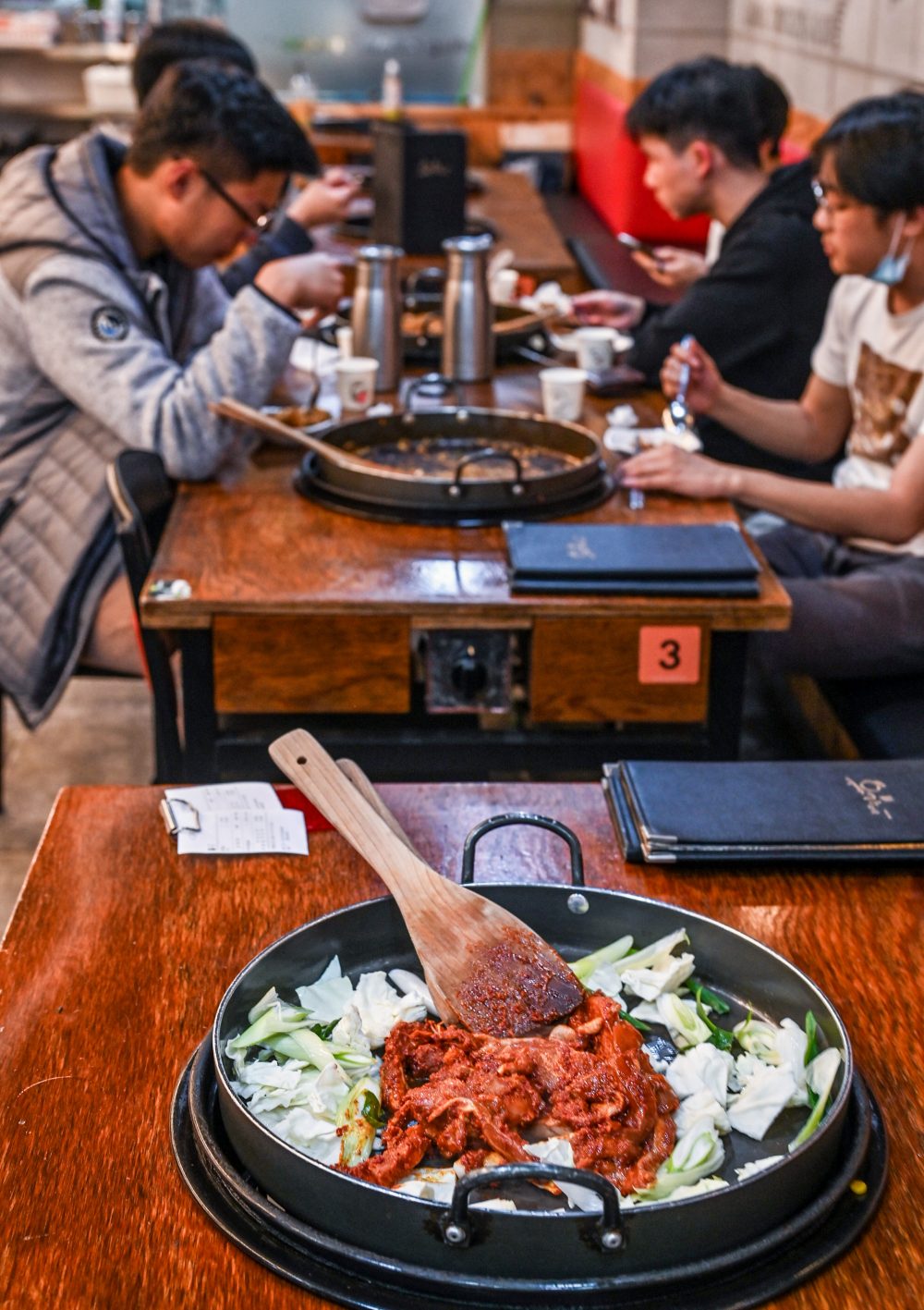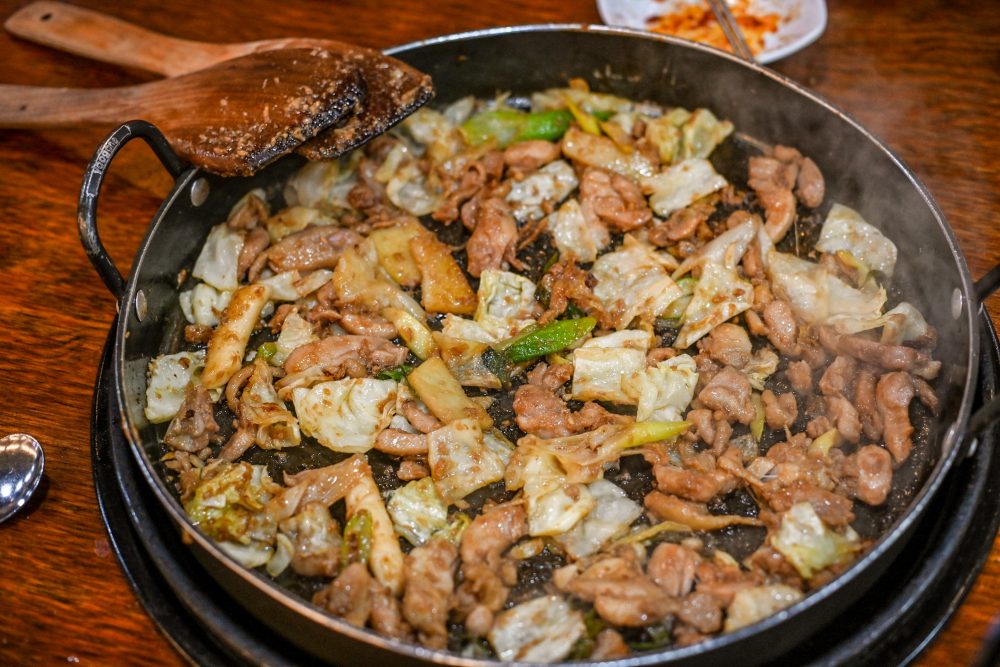
Cleverly repurposing leftovers into a second meal is fine by me. I just wasn’t expecting it at a restaurant—and while I still was eating the first meal! But I’d soon learn that’s much of the appeal of South Korea’s dakgalbi restaurants.
The word translates as “chicken ribs,” though no ribs are involved, and most places serve just one type of chicken—stir-fried with vegetables and gochujang, the country’s ubiquitous fermented chili paste. Really, the only choices are how spicy you want it and whether it is served with tteok, a type of chewy, dumpling-like rice cake, or noodles.
Favored by students and young workers, dakgalbi is an inherently communal meal that is cooked and shared, then cooked and shared again, all at the table. And it generally begins with a somaek—sometimes called a soju bomb—a beer spiked with a generous shot of Korean rice liquor.
I am at Naeja-Dong Chuncheon Dakgalbi, a Seoul eatery where every table is fitted with a large propane burner. Round One is an easy decision—maeun dakgalbi, spicy chicken with tteok. When the ingredients arrive—huge portions with leftovers intended—the waiter ignites the burner, topping it with a paella-like pan.
Yes, the aprons hanging from hooks on the walls are for you. And for the waiter. Use them. Once the chicken, cabbage, tteok and particularly the gochujang sauce hit that pan, there is plenty of splattering. The heat is intense, searing the meat, wilting the vegetables and concentrating the sauce. In minutes, it’s on your plate. And it is delicious—thick, rich, spicy and a little sweet. Some of the chicken gets crispy at the edges, a wonderful contrast to the plump rice cakes.
I’ve barely finished, a few portions still caramelizing on the burner, when Round Two begins. The waiter reappears, this time with a sturdy wok spoon. He scrapes the chicken and cabbage to one side, then adds a mound of freshly cooked rice, more gochujang, nori, carrots and onion. He tosses it all together, then spreads it flat, pressing it to the pan.
Soon the sizzle becomes a crackle, and when the waiter stirs, I see the crisped edges of rice. A few minutes of this, then the original leftovers are stirred in. When we taste the resulting fried rice, the ghost of the first dish is there, but it’s also something entirely new, wonderfully crispy-chewy, sweet and spicy.
For a home version, we simplified, selecting the best elements of both rounds and combining them into one streamlined stir-fry. Just don’t leave out the soju bomb.









